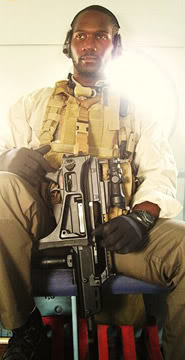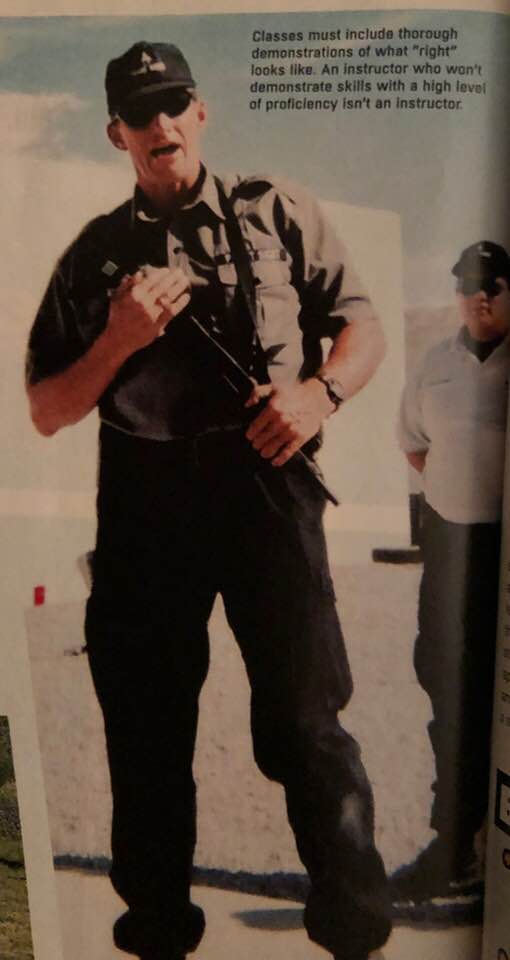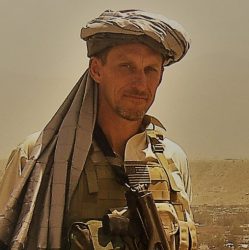Last week an article popped up from Swedish journalist Franz J. Marty titled What Living in Kabul is Really Like. Franz tells us Kabul is perfectly safe which is in stark contrast from the recent Laura Logan report on 60 minutes. From his article:
I don’t live in a highly secured compound. When I move around town, I usually walk. Only if it is too far will I take a car, and then certainly not an armored one or one of the expensive taxis for foreigners. …. I don’t eat in guarded, expensive restaurants as other foreigners do. I choose tiny, shabby local places, or carts selling food in the street. I live more or less like an average Afghan. So I dare to say that I have a pretty good image of the daily life in Kabul.
When I was living in Kabul I could have wrote that same paragraph but for different reasons. Given the deadly attack on the Intercontinental Hotel in Kabul yesterday it is important to describe why a city that is safe for a Swedish journalist is not safe for anyone else, even a guy like me who has spent years living there and knows the place better than any city in my home country.
The first thing to understand about safety in an unstable, war torn city like Kabul is that you have only two options; Grey Man or Hard Man.
The main threat to foreigners in Kabul comes from kidnappers who know they (and middle to upper class Afghans) will bring in a good amount of ransom. The secondary threat comes from Afghan security forces who have a nasty habit of shooting or arresting foreigners when they’re pissed.
Swedish journalist Nils Horner was shot in head from point blank range in the middle of the day by men who appeared to be NDS agents. American Louis Maxwell, a former sailor who was working for the UN, was executed by Police in Kabul. He had just fought off a Taliban attack on the UN guesthouse he was guarding, was badly wounded and had his high end G36K rifle laying next to him when the police showed up. One of the responding Kabul PD officers shot him in the head and ran off with his rifle – which has never been recovered.

The two strategies to mitigate risk available to foreigners are Hard Man or Grey Man. During the years I spent in Afghanistan I was forced, by genetics, into using the hard man option. I’m 6’2″, weigh 220 lbs and am fit. I have good genes which, when combined with a life long habit of physical training, is a considerable blessing. Except when it comes to working outside the wire in places like Kabul. There my appearance is a considerable liability because I stand out.
The hard man approach in Afghanistan included being obviously armed. I carried at 1911 pistol (.45 caliber) and used an OWB (outside the waistband) holster so my concealed pistol wasn’t that concealed. I was always alert and aware of my surroundings. I walked with my head up, shoulders squared, while employing my most effective weapon when dealing with Afghans on the street; a big, warm, friendly smile. Looking relaxed, confident, friendly and calm were essential to my ability to successfully travel into every corner of Afghanistan.
From 2005 to 2008 the average Afghan in Kabul had no issues with foreigners walking around the city. If you spoke a little Dari and people regularly saw you out and about even the street urchin problem (following you everywhere while aggressively begging) could be avoided. But what I could never do was attempt to blend in and go Grey Man; I’m too big and my languages skills were never good enough to go full Grey Man.
Grey Man involves blending into your surrounding environment and not standing out. It requires the wearing local clothes and near perfect language skills. To pull it off in Afghanistan you had to be shortish, skinny and limber. Walking gaits stand out, a western gait was easy to spot. Very few men were able to mask their western heritage well enough to pull off a full Grey Man in Kabul.
The atmospherics for westerners started changing in Kabul around 2010. It might have been earlier but I wasn’t living in Kabul from 2008-2012 so my finger was not tightly on the pulse there. The first change was that all the high end restaurants prohibited firearms. The Gandamak and L’atmosphere had always made patrons check their guns at the door which is one of the reasons I didn’t frequent them. By 2010 every restaurant catering to Westerners did the same (except certain Chinese places).
The weapons ban was part of the effort by then President Karzai to force every expat outside the wire to either get back inside the wire or pay him for security. He was aided and abetted by the UN who always had great security in part because they carved out an exemption for themselves. It is interesting to note that Louis Maxwell was killed while guarding a special election monitoring unit from the UN sent to Kabul to oversee the 2009 elections. They pulled out after the attack but before the elections. Louis’s hometown (Miami, Florida) newspaper wrote an article about his murder here where they accused Karzai of directing it.
In 2012 I moved back to Kabul where foreigners were prohibited from owning a weapon. Security contractors could carry company registered weapons on duty but even that was risky. The Karzai government would routinely confiscate weapons and radios from contractors who had the proper paperwork authorizing them. I know of at least one incident where they did the same to American army soldiers who were wearing civilian clothes on duty (there were a few outfits in Kabul authorized to do this) and they even impounded their armored vehicle. By the time the army got the radios, weapons and vehicle back the run flat inserts had been pulled from inside their tires.
I still walked around in Kabul that year mostly because I hated being cooped up inside our living compound. I wore local clothes in an attempt to blend in but that was useless. I was unarmed and felt like a target. I could not shake an inner voice that reminded constantly walking around was not a good idea. I know my posture changed, my shoulders slumped, my stride was different smile was long gone too because my level of confidence had plummeted and that is an important data point.
We have a mechanism in our brains that runs on serotonin and tracks our status constantly. The higher our status the better our emotions are regulated. As serotonin levels increase we feel more positive emotions; as they decrease less positive emotions. When I was living in Jalalabad a journalist once asked me if I was afraid of the Taliban. I smiled and told him something like “in this part of the country I’m the apex predator; I’m not afraid of anything”.
I honestly felt that way too and I say that knowing it is total bullschumer. I might be big and I can shoot like the professional, high end instructor I once was but to think that somehow made a lone American an Apex predator was ludicrous. But I felt that way which was why I was so positive and why I always smiled and why the Afghan security guys at every checkpoint (except for damn NDS one outside Kabul) loved it when my simple ass pulled up with my big smile, chattering away in atrociously poor Dari or Pashto like I knew what the hell I was doing.

I had gone to a modified Grey Man posture in the badlands of Helmand, Nimroz and Kunar provinces. I dressed in local clothes, drove old local beaters but I was heavily armed (pistol, rifle, frag and smoke grenades). I also was under no illusions about fooling anyone once I stepped outside my vehicle. Afghans cannot wink and I cannot squat on my heels which means my gait is different from an Afghan’s gait.
The ability to wink, I suspect, is just a cultural artifact. I’m sure Afghan kids have mastered the technique by now. What I found interesting was winking at Taliban who rolled up on project sites in an attempt to intimidate us made them furious. But we were armed and they weren’t so they had to take it which meant a loss of face for them that amused the Afghans working for us. They would laugh out loud during these confrontations; Afghans are brave like that.
I suspect that Franz Marty is a shortish, skinny man fluent in Dari who has developed the ability to walk with an Afghan gait. If so he is an exceptional Grey Man and that is a high compliment. The only other westerner I know who could pull off that level of Grey Man is my best friend and Free Ranging partner Shem (a.k.a. The Bot) who was the best operator I ever saw in Afghanistan.
Having the ability to use the Grey Man technique at that level allows for the Neurochemical regulation system to run at full capacity. A westerner who can pull off that level field craft knows he is doing something that very few of his fellow humans can do. He is, in the world of the outside wire westerner, a high status man.
There is a high degree of safety when one is able to become part of the herd. This is why Zebra camouflage works so well and why fish look the same as every other fish of their species and why they swim in schools. Men who stand out for any reason; too fit, too tall, too fat or too small cannot blend in well enough to pull off the Grey Man.
For women going Grey Man in the Muslim world is out of the question. Unescorted women stand out, trying to slip by wearing a burqa is problematic due to gait and the Islamic version of T&A. T&A in Afghanistan means toes and ankles and I became an expert at judging what was under the blue burqa by looking at women’s feet. When asked by other westerners what I was looking for I always answered “dudes”. I never expected to find any but it was such a cool answer I had to use it.
Franz Marty was writing about the Kabul he sees today but that is not the Kabul any other Westerner is going to find if they venture back to Afghanistan. His observations are interesting but they are also dangerous; nature is not fair and she does not endow many men with the skills needed to go Grey Man in Kabul.
All Franz has to worry about is being in the wrong place at the wrong time so his personal risk is low. It sounds like he avoids places frequented by other Westerners like the Intercontinental Hotel (I’ve stayed there many times over the years) which also significantly decreases his level of risk.
Any attempt by another Westerner to emulate the system Mr. Marty is using in Kabul would be suicidal. There may come a time when westerners can again go to Afghanistan and roam that beautiful country without too much drama. I’d love to do it myself but doubt that time will come while I’m still alive to see it.



Great read. I deployed to Kabul in 2011 doing PSD, and the local police would constantly stop us thinking we were contractors (we wore civvies) wanting to confiscate our weapons. The Intercontinental Hotel had the no weapons policy, and seemed every DV wanted to visit yet wouldn’t up our three man team to allow us to secure everything and everyone properly.
For me being armed equaled piece of mind even though we could have never used them against police or NDS agents. In that respect they weren’t as effective a tool as they could have been. I remember going to the Taverna du Liban in 2012 and not being able to enter with a sidearm. I had always carried in there, knew the owner well but the rules were the rules so Shem and I went in although that meant our driver had to drive back to the compound with 2 pistols in the car which would have landed him in jail if caught. As we enjoyed our meal I kept telling Shem that someday the Taliban were going bust in a kill a boatload of folks because they know we’re now sitting ducks. Two years later that is exactly what happened to the Taverna.
That was my point about allowing westerners to be armed and I problem should have included it in my post but it was running too long. Thanks for the kind words Dave.
hey. I think kabul is safe now after the military missions completed and continued as I have read article seen the real heroes like Maxwell and others like him. Great article please share all news like this on Best Liquor Decanter
In 2009 Shem-Bot advised me that when walking around Kabul or any Afghan city I would never blend in, so walk tall, smile and accentuate my muscle mass. Project an image of confidence and calm–but not arrogance–and that taking me physically would be difficult. Followed that advice from 2009-13 with an added twist–would try to look, act and speak Russian. I picked up some Russian language skills on another job. Combined with basic SDRs, staying in low-class guest houses and looking like I wasn’t worth kidnapping was able to avoid trouble. The times I felt most exposed were when jobs required me to visit the Intercon, Serena, etc.
Like I said Shemn was the best operator I saw in Afghanistan JD and you hit on something very few people know. Being able to speak and pass as a Russian was a big asset in Afghanistan. The Russians were remembered warmly by a healthy percentage of the population and I think that is because they were better at living with and training the Afghans. They even put one up in space where we were never even able to train one to handle our tactical air or artillery call for fire. There is a price you pay when you physically and psychologically separate yourself from the people you are supposed to be training and/or helping which has been a constant theme of mine for over a decade.
Front Sight? Do you still instruct there? I’d love to take your class.
I have been chatting with my friends at and plan to go back this spring to re-ceertify as an instructor Sando. If all goes according to plan I’ll be working the four day pistol classes this fall.
Great. I’ll keep an eye out.